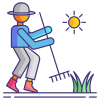
Food labels are an essential tool for consumers to make informed decisions about the food they eat. Understanding how to read these labels can help you choose healthier options and avoid hidden ingredients that may not be good for your health.
Key Information to Look For
When reading food labels, there are several key pieces of information to pay attention to:
Ingredients list: This is a list of all the ingredients used in the product, with the most abundant ingredient listed first.
Nutritional information: This includes the amount of calories, fat, sugar, sodium, and other nutrients in a serving size of the product.
Serving size: This tells you how much of the product is considered one serving, and all the nutritional information listed is based on this serving size.
Avoiding Hidden Ingredients
Many food labels can be misleading, with hidden ingredients that may not be immediately obvious. Some common hidden ingredients to watch out for include:
Added sugars, which can be listed under various names such as high fructose corn syrup, agave nectar, or cane juice.
Artificial flavors and colors, which may be added to enhance the appearance or taste of the product but offer no nutritional value.
Trans fats, which are often disguised as partially hydrogenated oils on labels.
Using Food Labels to Make Healthier Choices
By carefully reading food labels, you can make better choices for your health. Look for products that have:
Low amounts of added sugars
No trans fats
Whole ingredients that you recognize
Remember that the healthiest foods often don’t come with labels at all, such as fresh fruits and vegetables, whole grains, and lean proteins.
Conclusion
Being able to read food labels like a pro is an essential skill for making healthier choices and avoiding hidden ingredients in processed foods. By understanding the key information on food labels and being aware of common pitfalls, you can take control of your diet and make better choices for your health.
